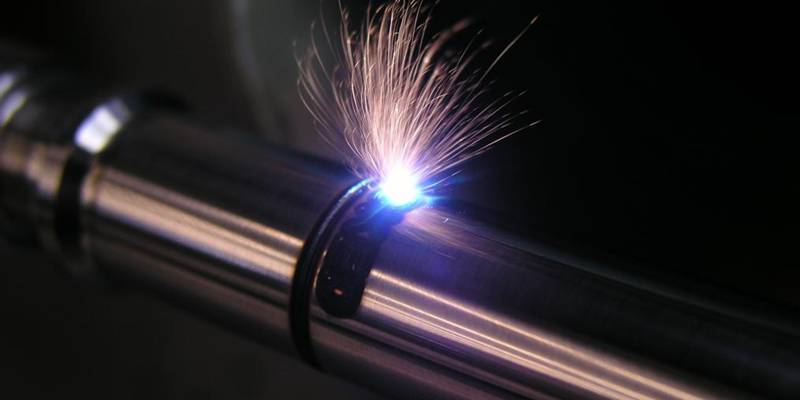Laser Engraving: What Is It and How It Works
- jinandirui
- Sep 8, 2023
- 3 min read

In the world of modern technology, laser engraving is a fascinating process that has found its applications in various industries. Whether you're a curious individual or a business owner looking to understand this cutting-edge technique, you're in the right place. In this comprehensive guide, we will delve into the world of laser engraving, exploring what it is, how it works, and its diverse applications.
What Is Laser Engraving?
Laser engraving is a precise and versatile method of creating intricate designs, patterns, or markings on various materials. Unlike traditional engraving techniques, which often involve physical tools like chisels or cutting bits, laser engraving utilizes the power of focused laser beams to etch or engrave the surface of materials with incredible precision. For businesses looking to invest in this technology, finding a reputable CNC Laser Engraving Machine manufacturer is crucial to ensure quality and performance.
The Mechanics Behind Laser Engraving
To grasp how laser engraving works, it's essential to understand the fundamental mechanics involved. Here's a simplified explanation:
Laser Source: The process begins with a high-powered laser source, typically a CO2 or fiber laser. This laser emits a concentrated beam of light with exceptional energy.
Focused Beam: The laser beam is then focused onto the material's surface through a series of mirrors and lenses. This precision ensures that the energy is concentrated in a small spot, allowing for precise engraving.
Material Interaction: When the focused laser beam makes contact with the material's surface, it generates intense heat. Depending on the material, this heat can either vaporize, melt, or cause a chemical reaction on the surface.
Controlled Movement: To create the desired design or engraving, the laser's movement is meticulously controlled by a computer program. This program guides the laser across the material's surface, tracing the pattern or text.
Cooling and Ventilation: During the process, it's crucial to have efficient cooling and ventilation systems in place to dissipate heat and prevent damage to the material.
Materials Compatible with Laser Engraving
One of the remarkable aspects of laser engraving is its compatibility with a wide range of materials. Some of the most commonly engraved materials include:
Wood: Laser engraving on wood is popular for creating intricate designs on furniture, signs, and personalized gifts.
Acrylic: This material is favored for its transparency and is often used for making custom awards, signage, and decorative items.
Glass: Laser-engraved glassware, such as wine glasses and mirrors, adds an elegant touch to various occasions.
Metal: Metal engraving is ideal for creating durable markings on items like tools, firearms, and jewelry.
Plastic: Plastic components in electronics, promotional items, and industrial equipment are often engraved with lasers for branding and identification purposes.
Advantages of Laser Engraving
Laser engraving offers several advantages that make it a preferred choice in many industries:
Precision and Detail
Laser engraving excels in producing intricate and highly detailed designs that would be challenging to achieve with traditional methods. Whether it's engraving fine text or replicating complex artwork, laser technology delivers remarkable precision.
Versatility
The ability to engrave a wide variety of materials, including those with irregular shapes, makes laser engraving a versatile choice for businesses and artisans alike.
Speed and Efficiency
Compared to traditional engraving techniques, laser engraving is often faster and more efficient. This can lead to cost savings in mass production and quicker turnaround times for projects.
Customization
Laser engraving allows for complete customization. Whether you want to add a personal touch to a gift or brand your company's products, laser technology offers endless possibilities.
Applications of Laser Engraving
Laser engraving finds applications in numerous industries and creative endeavors:
1. Industrial Manufacturing
In the industrial sector, laser engraving is used for marking serial numbers, logos, and barcodes on metal and plastic components. It ensures traceability and quality control.
2. Jewelry and Accessories
Jewelry designers utilize laser engraving to create intricate patterns, inscriptions, and unique textures on precious metals, gemstones, and other materials.
3. Awards and Recognition
The awards and recognition industry benefits from laser engraving's ability to produce finely detailed plaques and trophies with personalized inscriptions.
4. Art and Personalization
Artists and hobbyists employ laser engraving to bring their creative visions to life on various materials, from canvas to leather.
Conclusion
In conclusion, laser engraving is a remarkable technology that has revolutionized the world of engraving and marking. Its precision, versatility, and diverse applications make it a valuable asset to industries and individuals alike. Whether you're looking to add a unique touch to your creations or enhance your business's branding, laser engraving offers a world of possibilities. Embrace this innovative technology, and watch your ideas come to life with unparalleled precision and style.



Comments